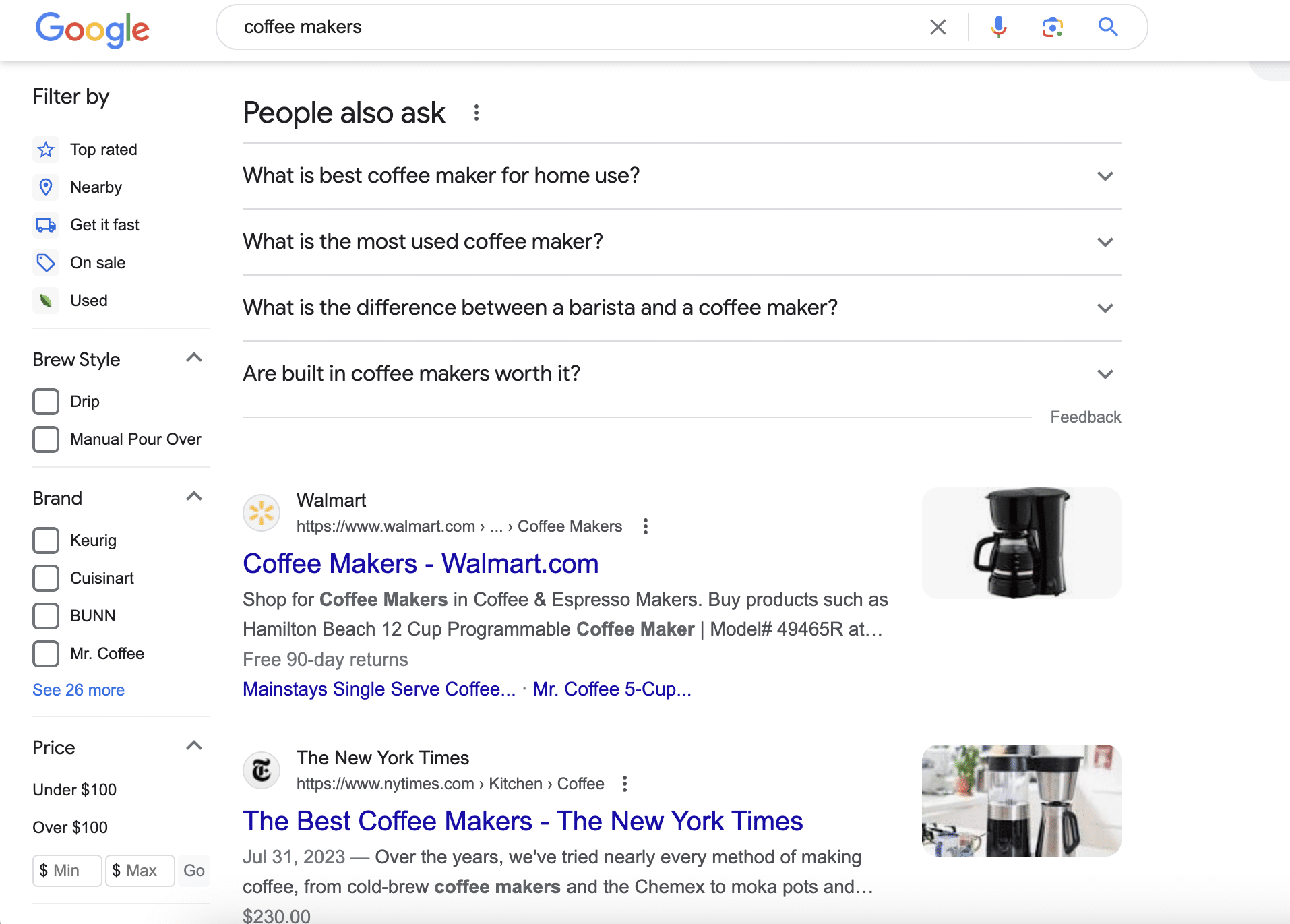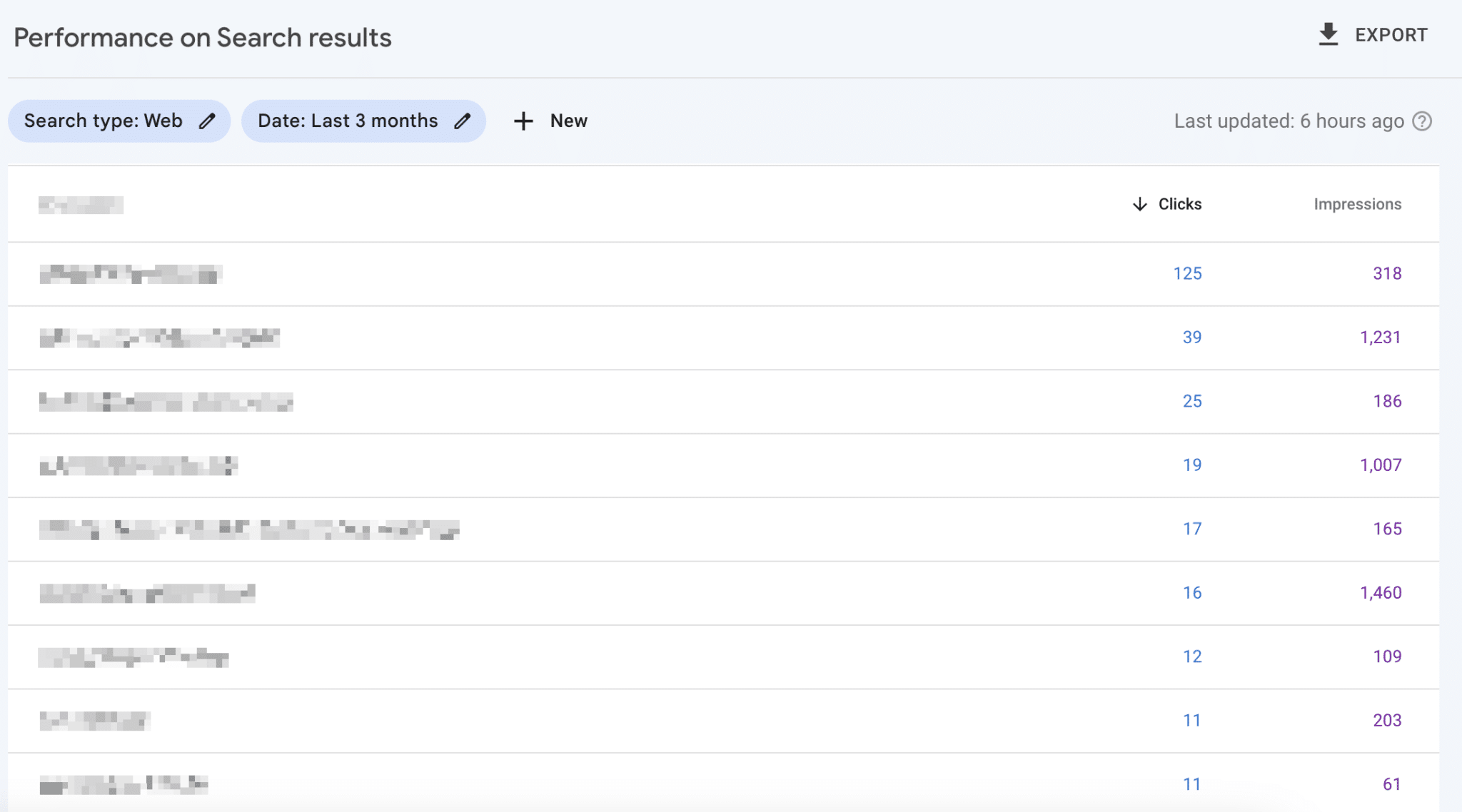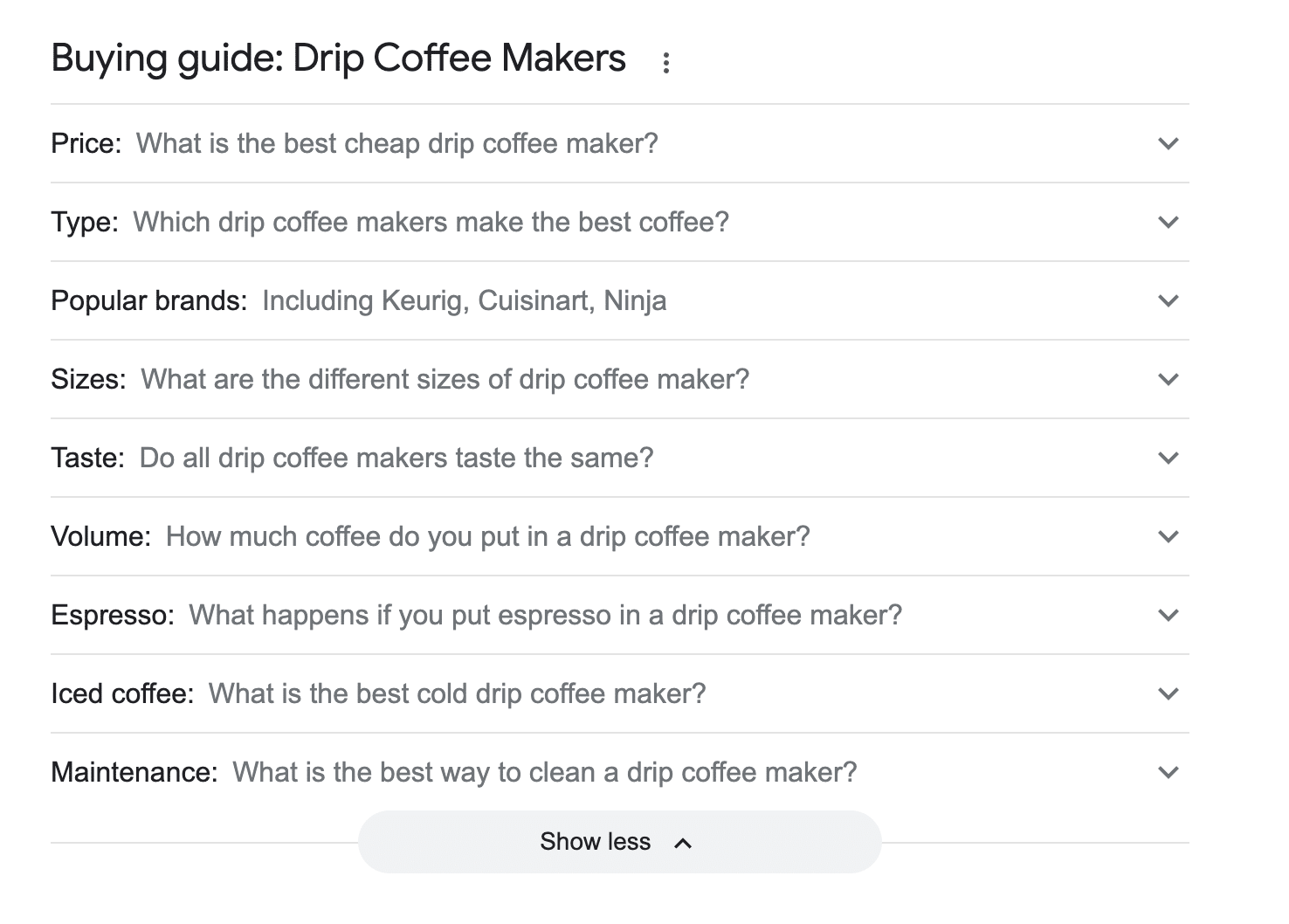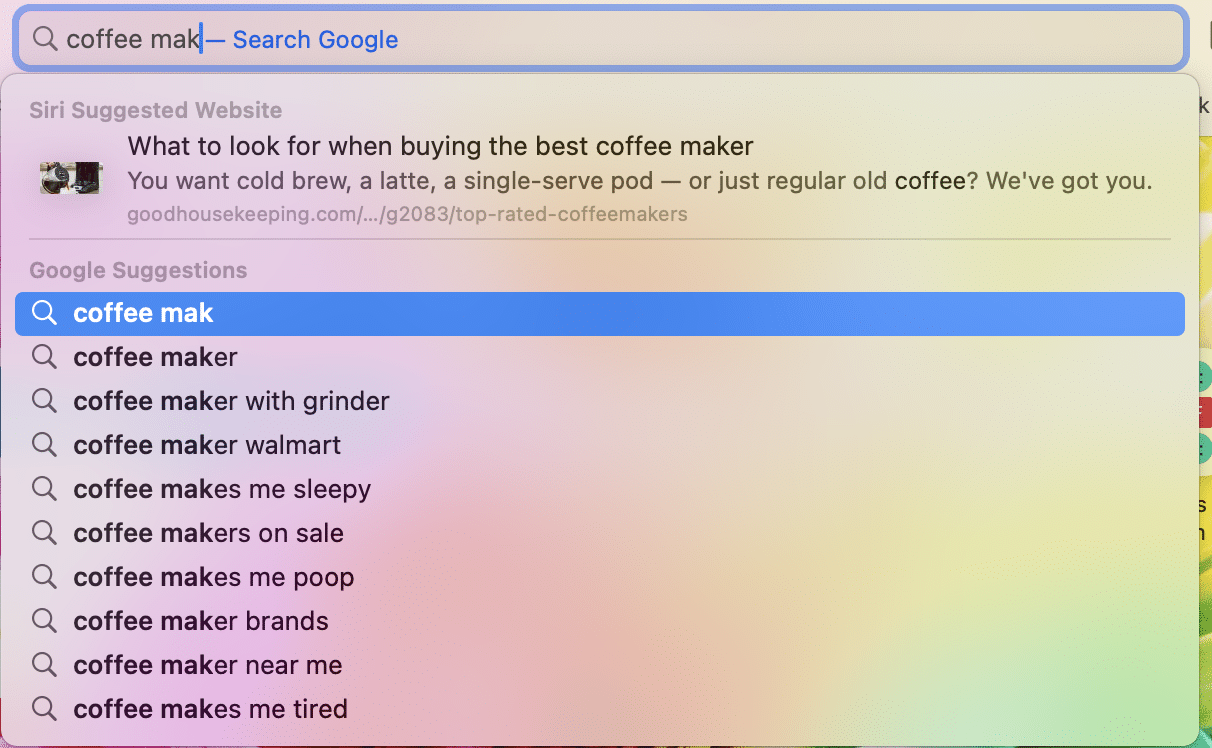Mastering User Intent: Your Blueprint for Content Marketing Success
Imagine you own a local coffee shop. If someone walks in and asks for a “black coffee,” you wouldn’t hand them a latte, would you? The same principle applies online. Understanding user intent is like the local coffee shop barista who knows exactly what their customer wants.
The key is understanding user intent.
Aligning your content strategy with the intent behind users’ searches can help you create content that satisfies their needs and motivates action. In this article, we’ll go through the nuts and bolts of identifying user intent to create content that keeps users engaged.
Analyze search results
One of the best ways to uncover user intent is to analyze search engine results pages (SERPs) for your target keywords. Pay attention to the types of results that appear on the first page – are they primarily informational articles, how-to guides, product pages, research reports, etc.?
The content type dominating the SERP offers clues into whether users are searching with informational, navigational, or transactional intent.
For example, if the top results for “coffee makers” are primarily shop product pages and reviews, this implies that users are searching with transactional intent and finding specific coffee maker models to buy.
On the other hand, if the top results for “how to brew coffee” are mainly step-by-step tutorials and guides, users likely have an informational intent to learn how to brew the best cup of coffee.
Understanding the primary user intent behind your target keywords allows you to create content that aligns with and satisfies the reader.

Leverage Tools Available
Google Search Console provides useful data for identifying user intent signals and aligning your content accordingly. Under the “Performance” section, check out the queries that are driving traffic to your site.
Look for common patterns in the types of terms being searched. Are they short or long-tail (single words or several words together? Do they indicate informational needs or specific product and service interests?
You can also view click-through rates on search results to see which types of content (articles, videos, product pages, etc.) users favor for different queries.
If how-to content is getting more clicks for informational terms, focus there. If product pages get more clicks for transactional terms, highlight product content.
Google Search Console even shows you queries you’re ranking highly for and those you’re completely missing out on. Use these insights to create content tailored to user intent.

Speak to Your Ideal Person
Put yourself in the shoes of your target audience to get clarity on their potential intent when searching for relevant topics. Ask yourself:
- What questions would my customers have when first learning about my business?
- What pain points or problems can my products/services help solve?
- What stages of the buyer’s journey would they be in? Are they just starting preliminary research or ready to purchase?
- What type of information would they find helpful at different stages?
When writing content, adopt your ideal persona’s mindset. Beginner-focused informational content is key if they’re starting out and need basic education. Detailed product information and comparisons may be more relevant if they’re further down the funnel evaluating solutions.
Speaking directly to your customers will help craft content that answers their questions, solves their problems, and moves them toward conversion.

Types of User Intent to Consider
There are three main types of user intent that your content should aim to satisfy:
Informational Intent: The user wants to research a topic and gain knowledge but may not have a specific business or product in mind yet. They are looking for high-level information, overviews, definitions, and basic education.
Navigational Intent: The user is looking for a specific business, product, or service. They likely have one in mind already and want to find the official website or source.
Transactional Intent: The user has a need they want to actively solve by obtaining a product or service. They intend to research options, compare, and ultimately purchase.
When writing content, consider these different intent types.
Aligning content types to user intent is key for providing information that moves audiences through the buyer’s journey.
Things to Try
Here are some tactical tips to identify and optimize for user intent:
- Conduct keyword research to see search volume and difficulty for informational vs. transactional terms. This can uncover intent opportunities.
- Survey your audience through polls or questionnaires to learn about their goals and questions. Develop FAQs and content topics directly from user input.
- Analyze on-site behavior such as page views, clicks, and on-page scroll depth. This can reveal content resonating with users vs. content missing the mark.
- Develop buyer personas and map content to their journey from awareness to decision-making. Fill in content gaps per persona needs.
- Optimize pages/posts for semantic keywords that directly relate to searcher intent and queries. This helps search engines connect your content to relevant searches.
- Promote content on channels where your target users spend time, such as forums and groups related to your niche. Participate in conversations to engage searchers.

Aligning Your Content Strategy
Identifying and optimizing your content for user intent takes work. But it pays off tremendously in the long run by providing the right information that moves audiences through their journeys to become customers.
Dedicating time to understanding your users’ search patterns, questions, and motivations will allow you to create content that ranks and converts.
Focus on addressing all stages of the searcher’s journey – from those with informational intent just starting their research to those ready to purchase and seeking transactional information. Monitor your analytics and search performance to double down on content resonating with user intent.
By putting yourself in your customers’ shoes, uncovering their true intent, and addressing their needs in your content, you’ll be rewarded with high-converting traffic that boosts your business goals. Master this process, and you’ll have a proven blueprint for content marketing success.
